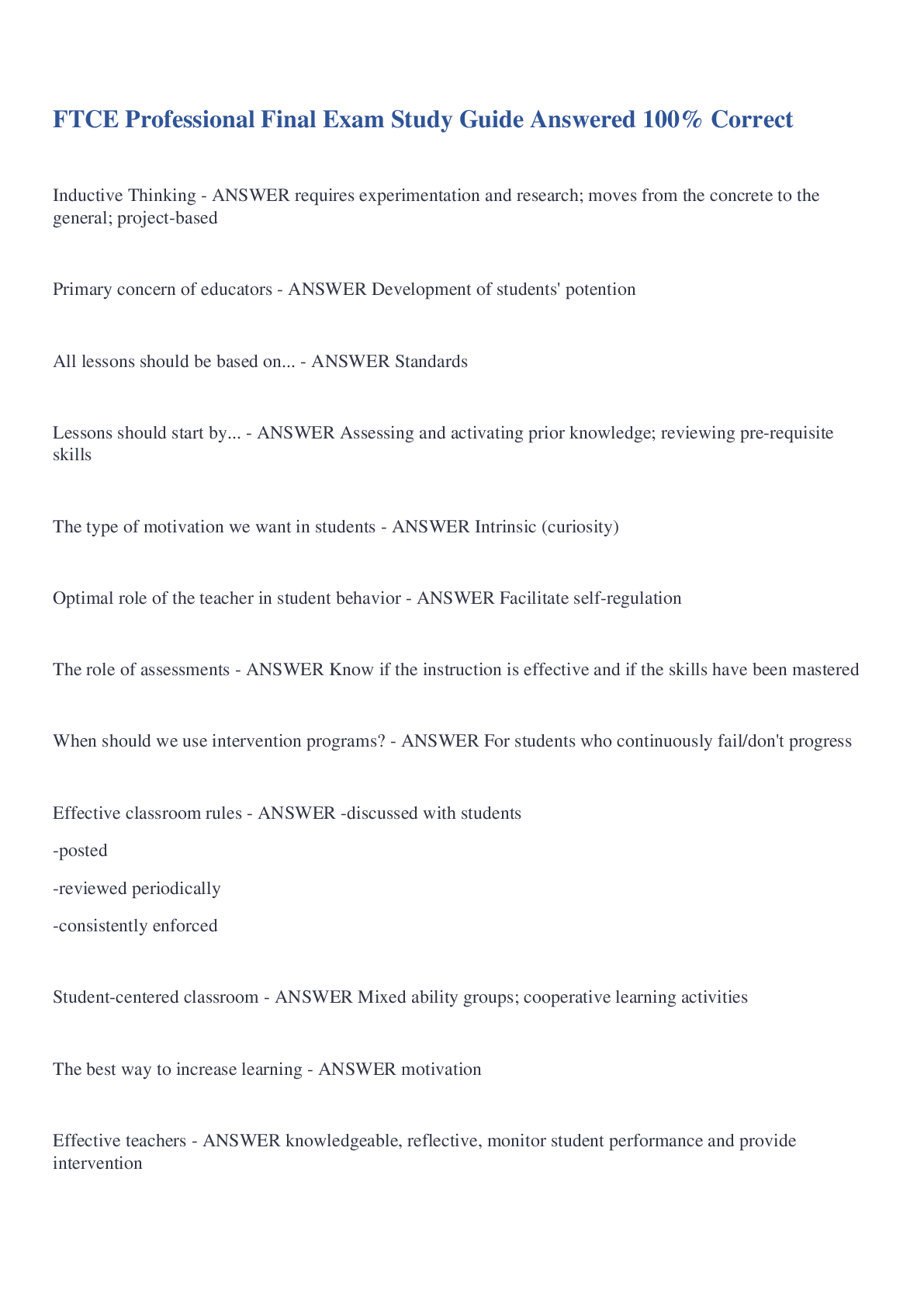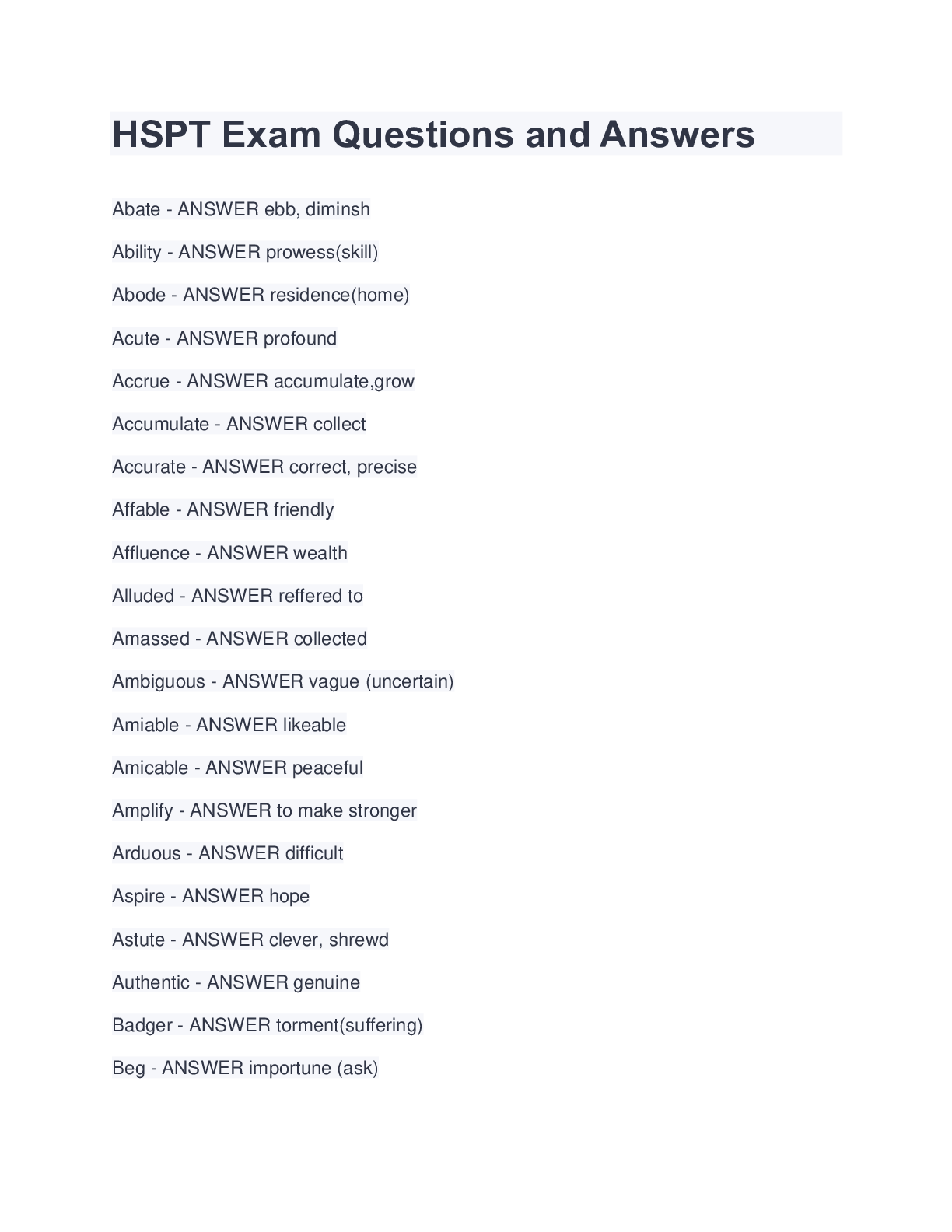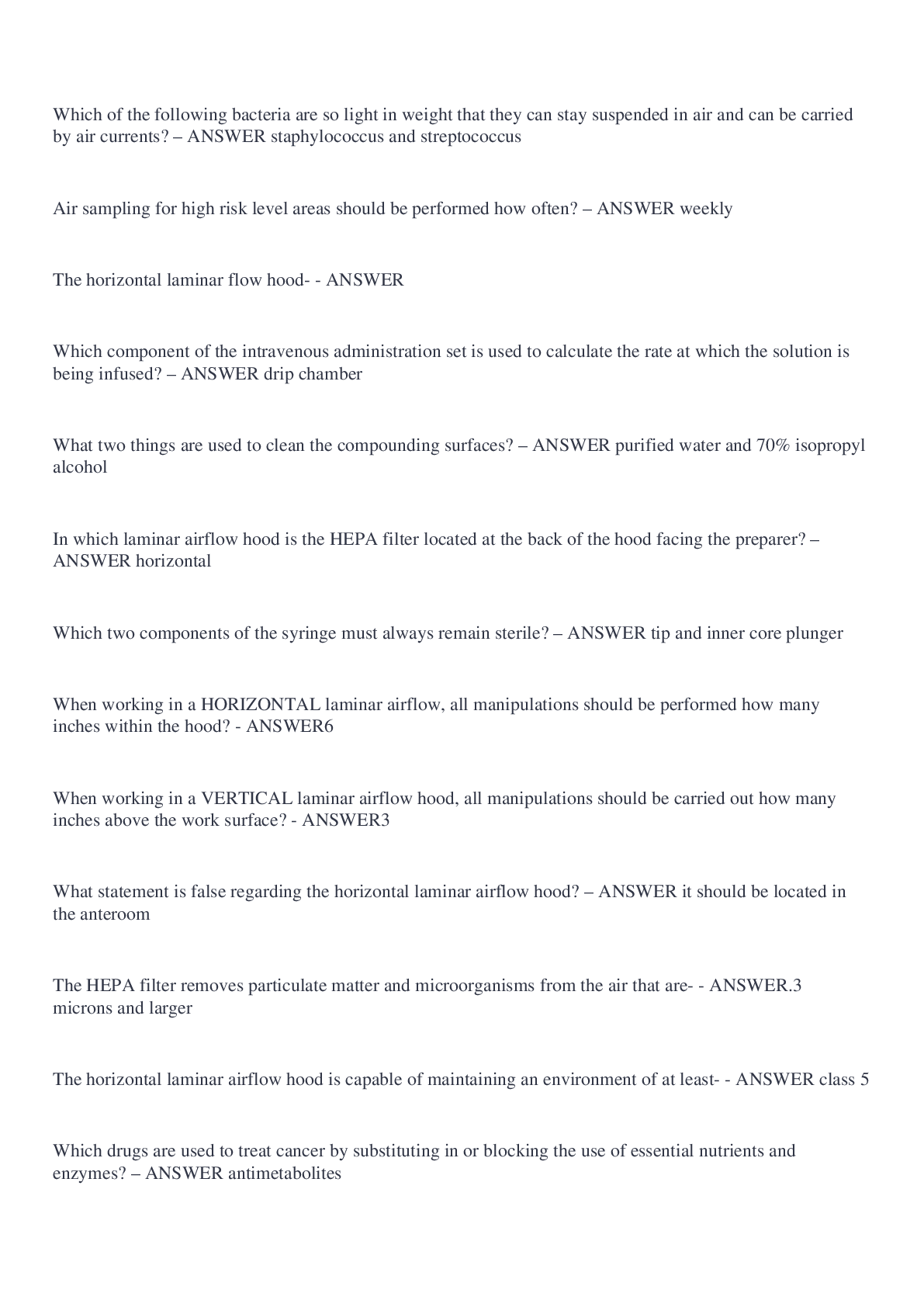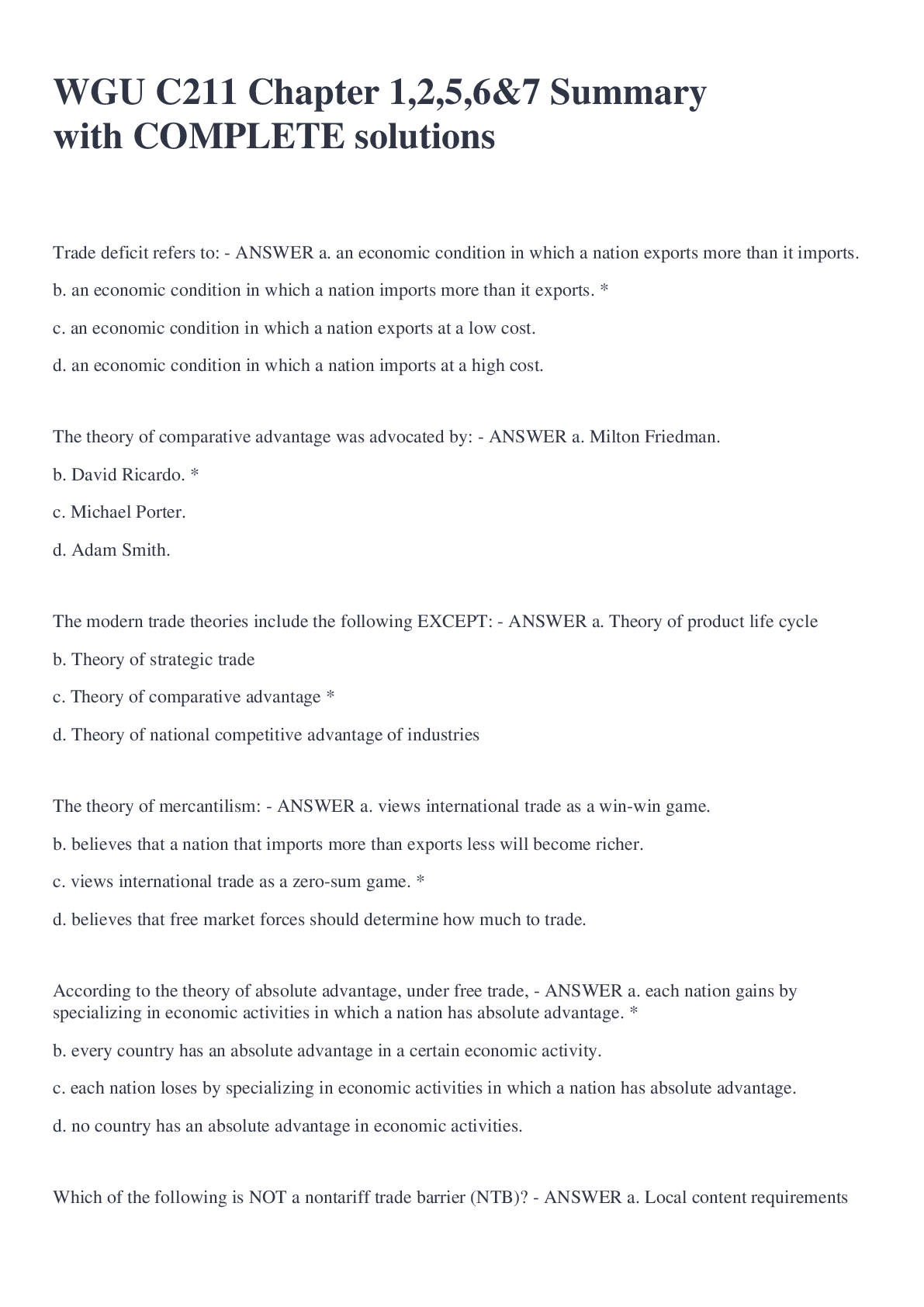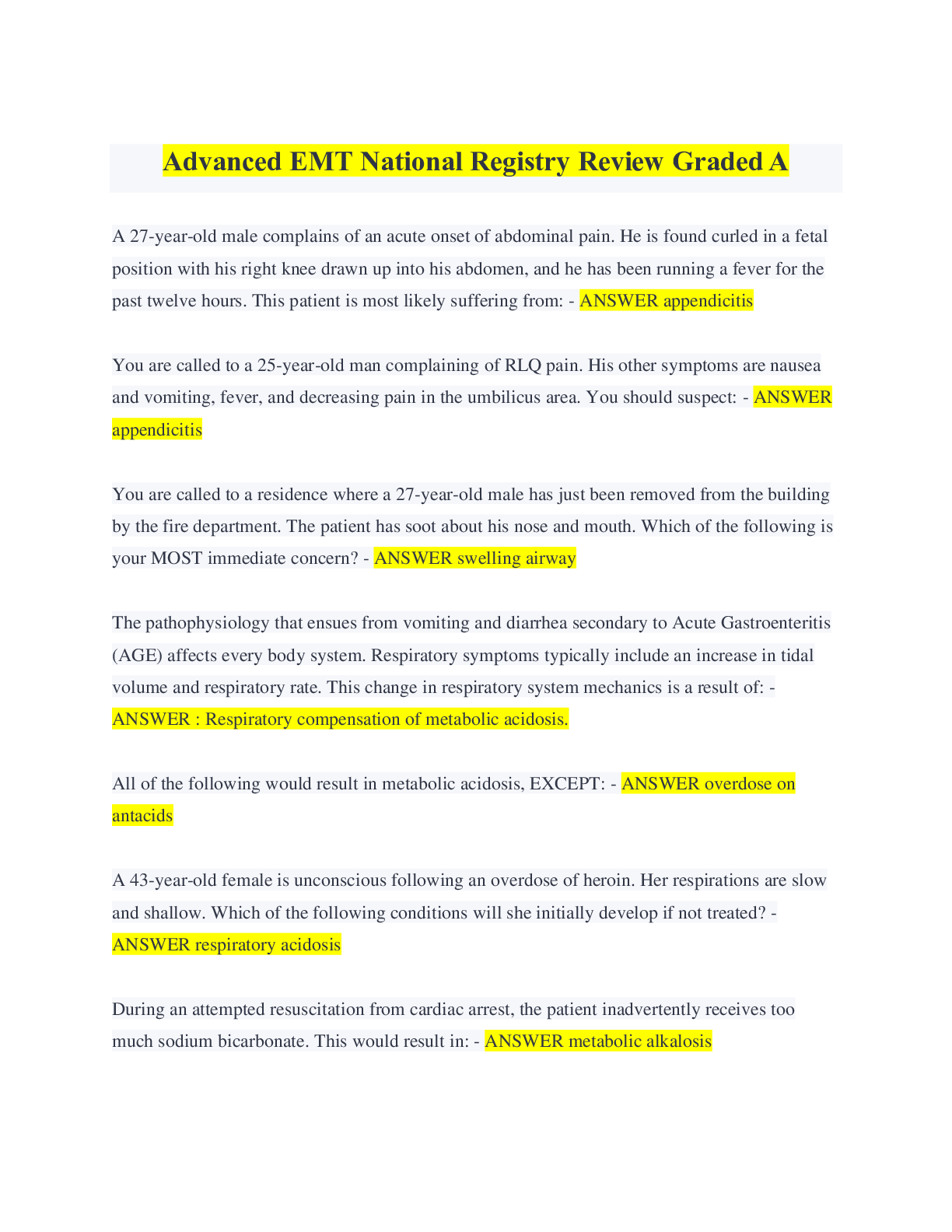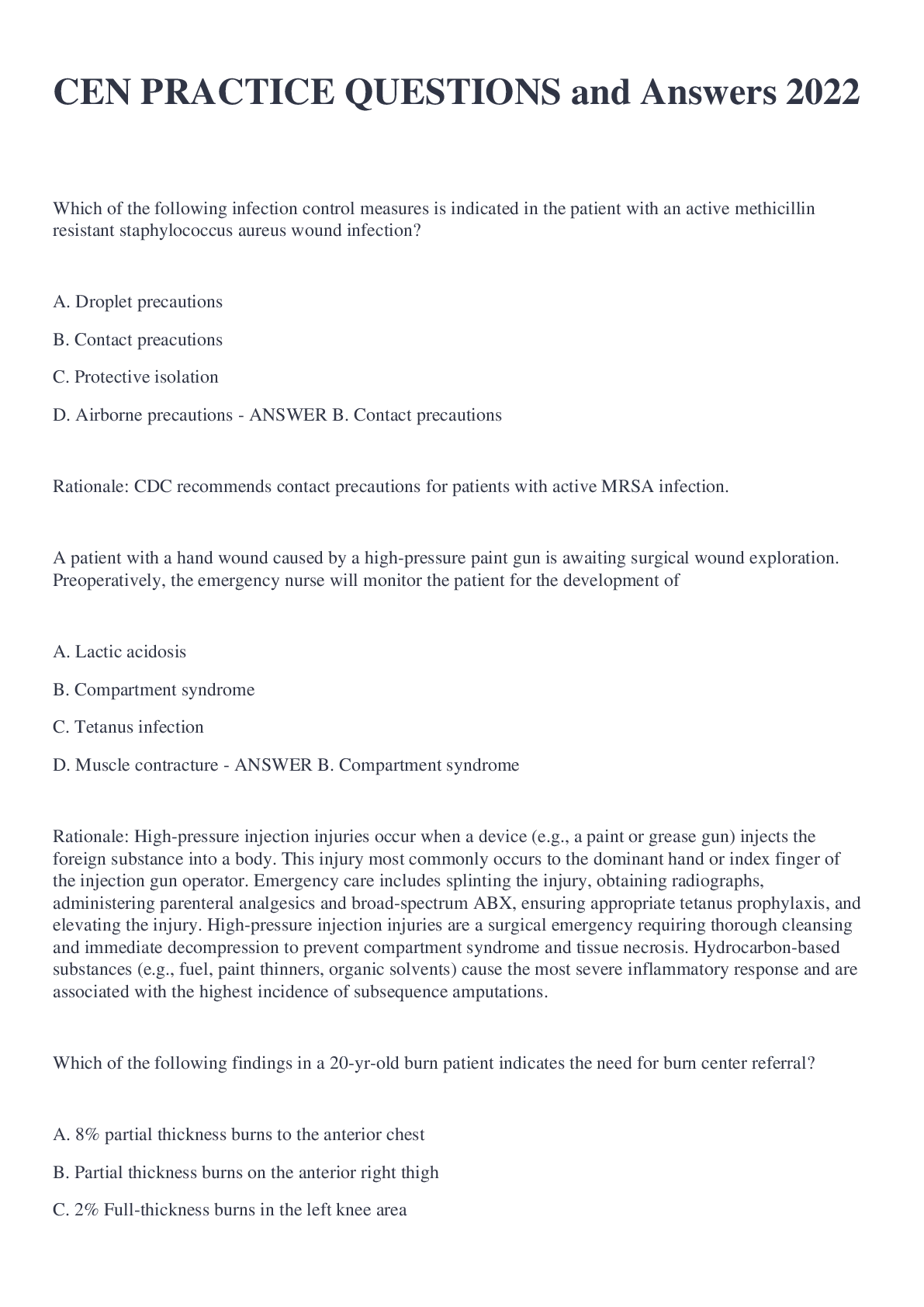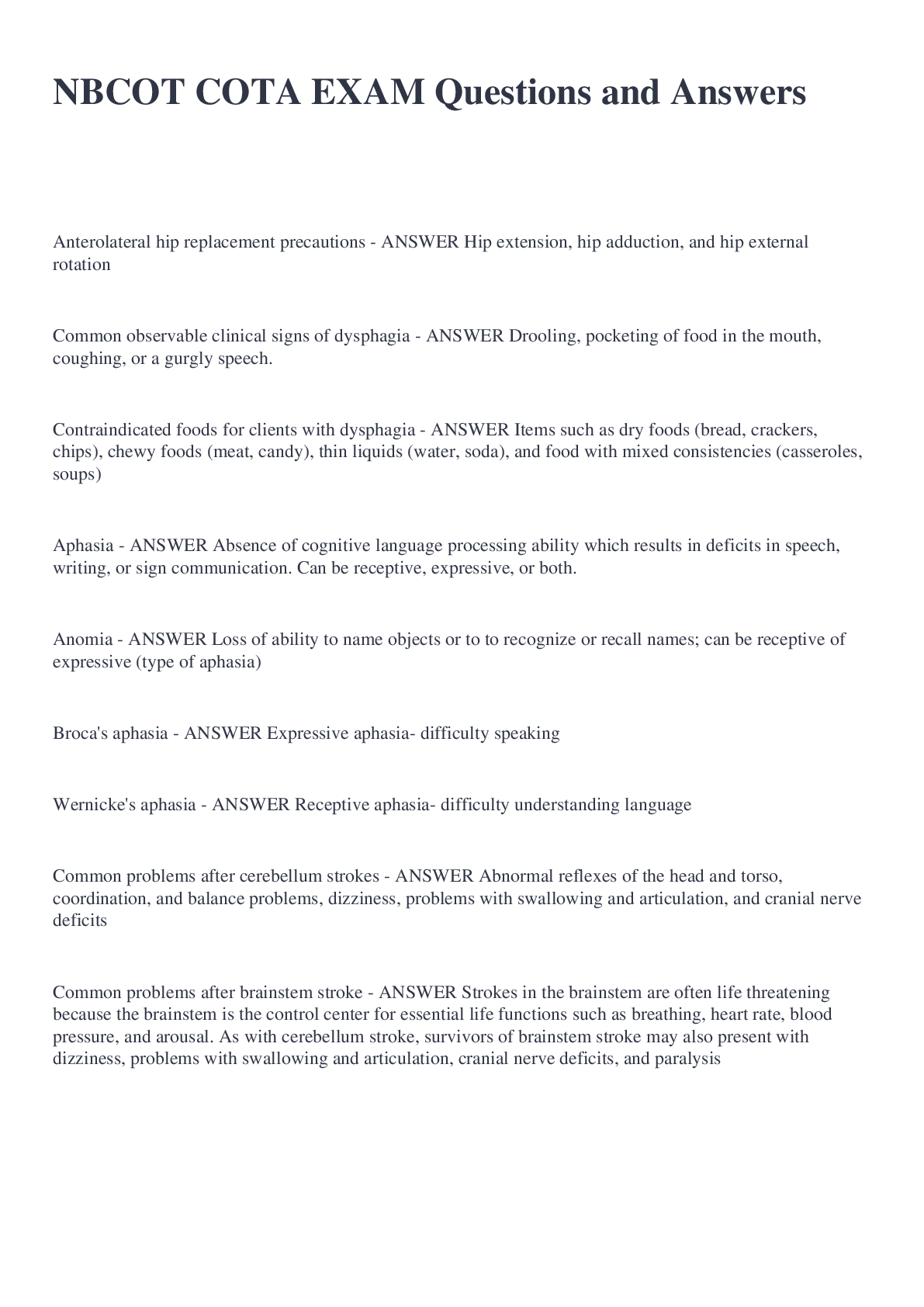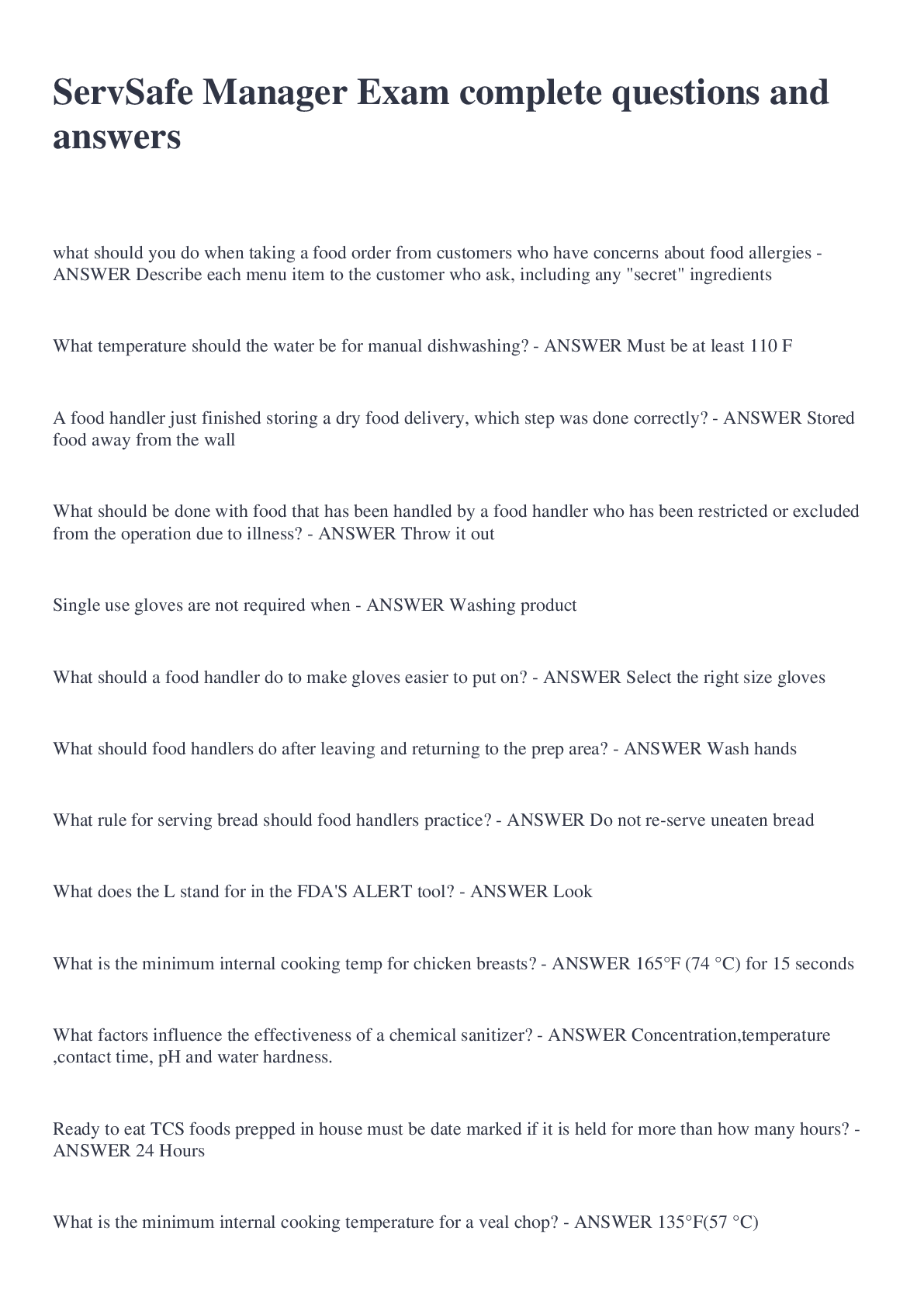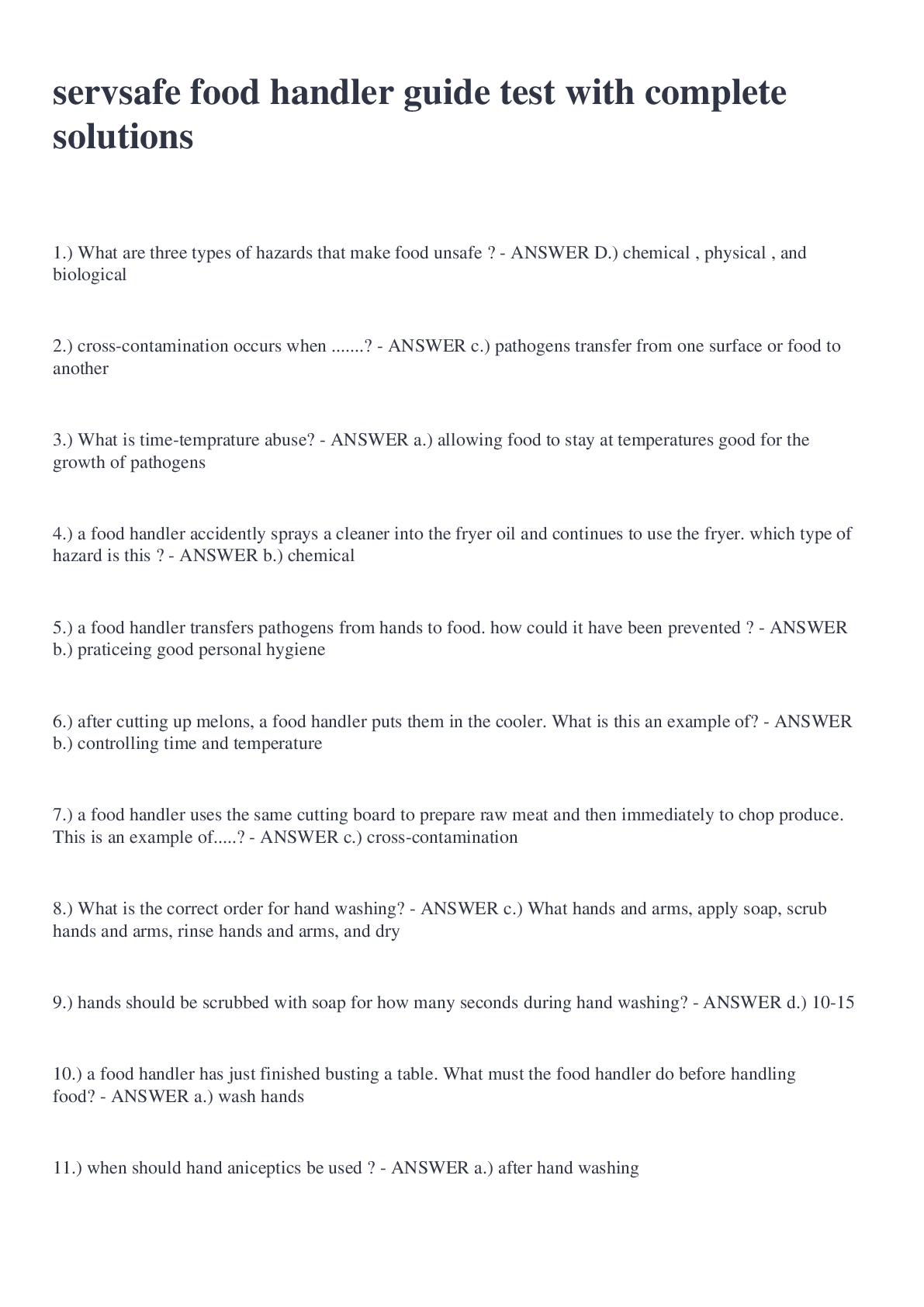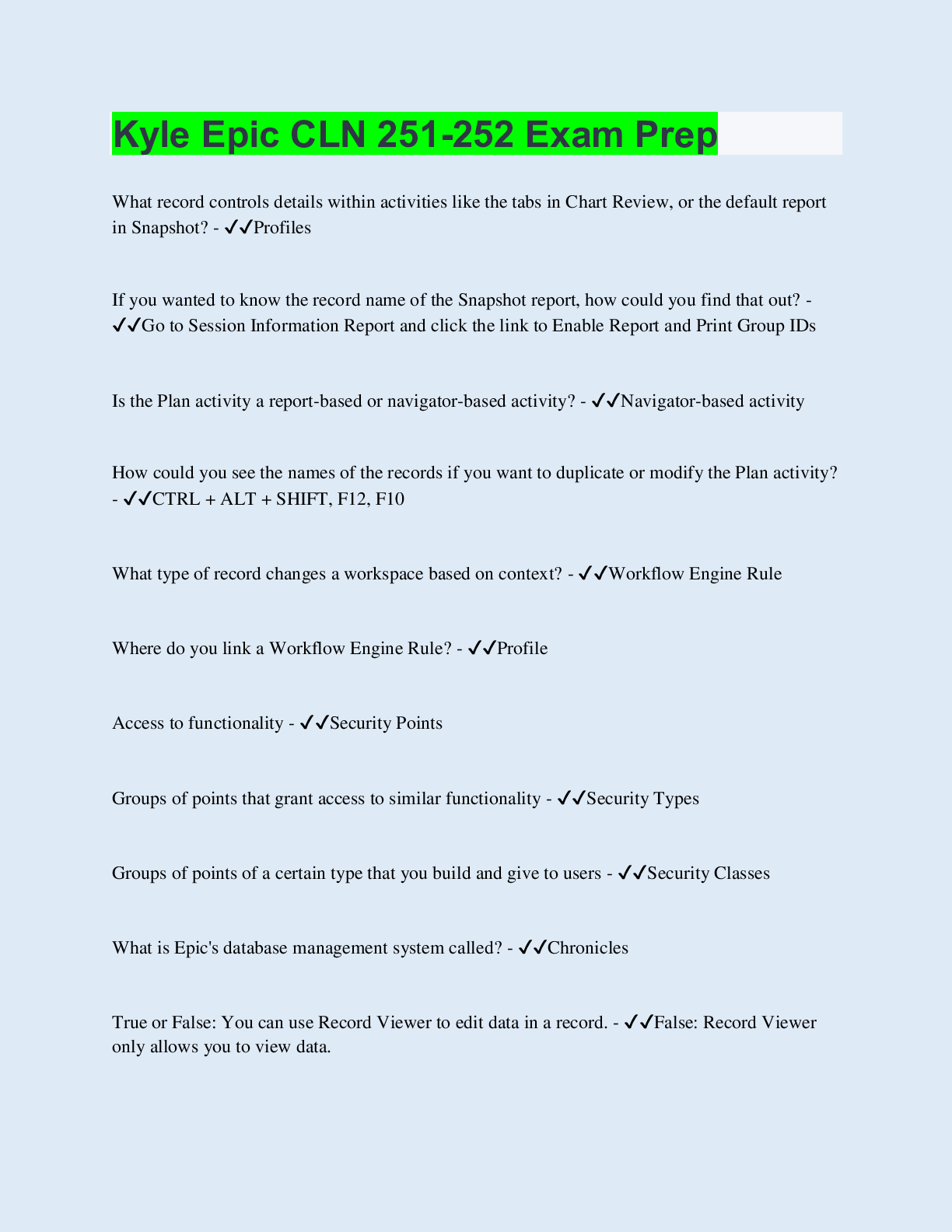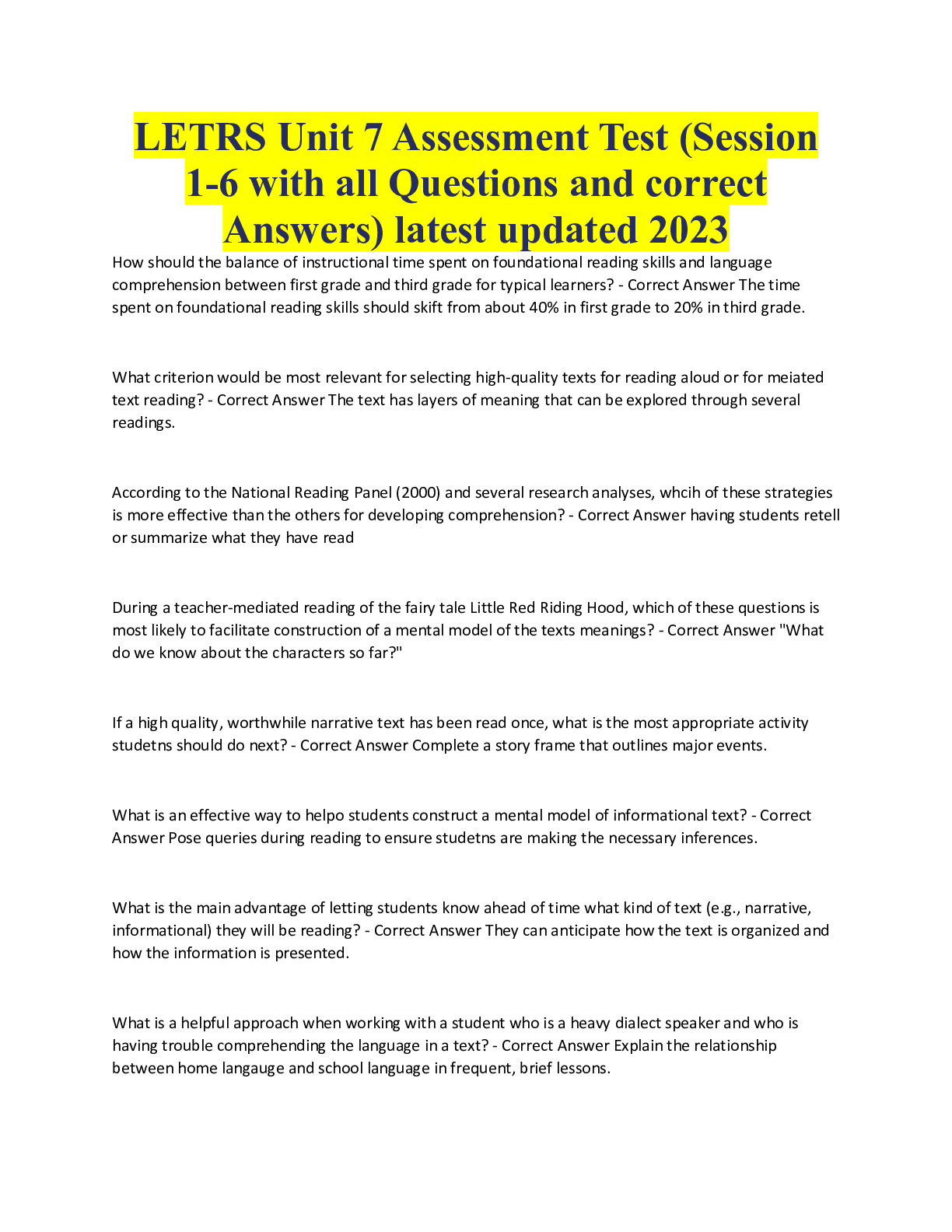Nursing 343: Nursing in a Disaster Exam 1 Solved 100%
Document Content and Description Below
Disaster Cycle - ANSWER 4 phases: 1. Mitigation 2. Response 3. Recovery 4. Return to Mitigation of future disasters Mitigation - ANSWER Preparations taken to lessen the effects of a disaster. A... n analysis of what has worked or failed in the past, what improvements in technology have been developed, the changes in demographics and populations, and change in infrastructure. Organizational charts Response - ANSWER Organized or unorganized action taken during and immediately after event. Purpose: to save life, limb, and property. Carried out in an unorganized manner as in the case of local, state, or federal disaster response personnel. Recovery Phase - ANSWER The effort to return to normalcy after a disaster; begins after response phase ends. Usually a long, difficult process. Is complicated by several factors including finances and personal freedoms. DMAT - ANSWER Disaster Medical Assistance Team DMORT - ANSWER Disaster Mortuary Operational Response Teams VMAT - ANSWER Veterinary Medical Assistance Teams SAR - ANSWER Search and Rescue Teams FEMA - ANSWER Federal Emergency Response Agency ICS - ANSWER Incident Command System: a management system that allows for a strong, definitive command structure with specific areas of responsibility assigned to individuals as needed and is applicable to the community's response as well as that of hospitals and other institutions. ICS: Operations - ANSWER A section that is concerned with carrying out the tasks necessary for the disaster response. Including: law enforcement groups, fire, SAR, medical, etc. ICS: Logistics - ANSWER Task: to obtain, organize, and maintain supplies, equipment, base operations, and provide for transportation needs. ICS: Finance - ANSWER Tracks all expenditures including money, man-hours, or supplies. NIMS - ANSWER National Incident Management System: allows each group to contribute its specialized service while allowing for a centralized command structure. Disaster - ANSWER A destructive event that overwhelms all available resources. Disaster Triage - ANSWER Triage that evaluates a few critical signs; is the victim breathing?, do they have a pulse?, can they follow commands?. Categorizes victims according to considerations that indicate if victims can survive and in what order they should be treated. Mass Casualty Incident (MCI) - ANSWER An incident that generates more pts at one time than locally available resources can manage using routine procedures. Triage - ANSWER Separates pts or victims based on the severity of their illness or injury. Green/Minor - ANSWER Victims w/ minor injuries. "Walking wounded," b/c they're able to follow commands and walk to collection point. will wait the longest for treatment. Yellow/Delayed - ANSWER These victims may not be able to walk, but they're stable and will be transported or treated after seriously injured. (red or immediate) Red/Immediate - ANSWER These victims are seriously injured and show signs of being unstable. These victims will be treated and transported before any other victims. Black/Expectant/Deceased - ANSWER Dead Victim Triage - ANSWER The assessment and evaluation of each victim, assigning each to a particular level of acuity and attaching disaster tag with appropriate color. START - ANSWER Designed to allow personnel w/ limited medical knowledge and skill to triage victims in 60secs or less per victims. Evaluates victims based on 4 criteria: 1. Can he respond and walk. 2. How fast are his respirations 3. What is his perfusion status 4. What is his mental status START- FIRST - ANSWER All walking wounded are classified as green/minor. Should be re-evaluated often. [Show More]
Last updated: 2 years ago
Preview 1 out of 5 pages

Buy this document to get the full access instantly
Instant Download Access after purchase
Buy NowInstant download
We Accept:

Reviews( 0 )
$8.00
Can't find what you want? Try our AI powered Search
Document information
Connected school, study & course
About the document
Uploaded On
Sep 15, 2022
Number of pages
5
Written in
Additional information
This document has been written for:
Uploaded
Sep 15, 2022
Downloads
0
Views
51


